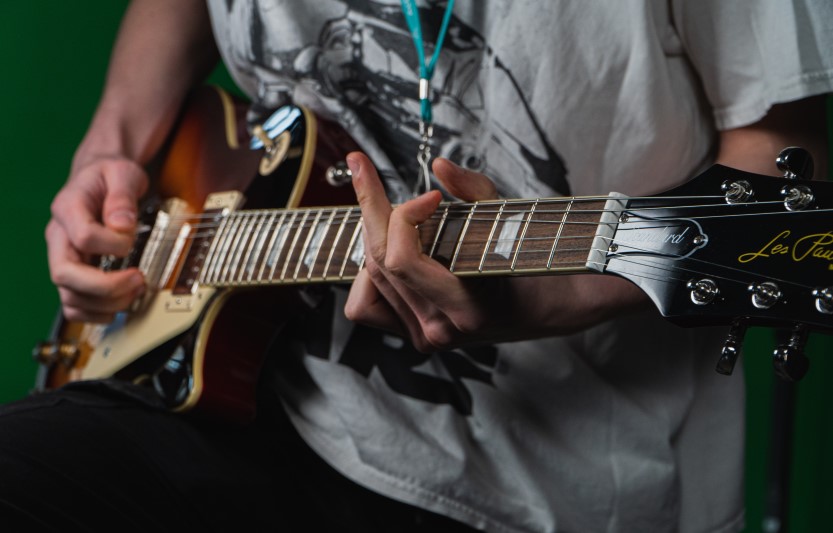
This guide to learning fretboard notes will open the door to becoming a much better guitarist. If you’re a beginner, buckle up!
We’re going into uncharted territory. Here is where the mediocre musicians get separated from the good ones, so get on board or get out!
Still here? Great! By learning notes on the fretboard, your ability as a guitar player will grow exponentially. Part of the reason for this is that you will know what you’re actually playing. Naturally, to get somewhere, it is helpful to know where you are going. The guitar fretboard is no exception. So get ready to stop noodling aimlessly on the guitar and let’s get down to action. Check out our Roadie Coach as it offers personalized feedback and exercises to help you improve, as well as a recording feature. Without further ado, here is our guide to learning fretboard notes.
A bit of perspective
The guitar is just a piece of wood with some strings and electronics. What makes it beautiful, amazing and even life-altering is the musician that plays it. Your soul, brain, and hands combine to bring music to life and reach hearts.
As amazing as that sounds, it takes a lot of practice to become good at guitar (or anything else for that matter). Learning the fretboard is a process that will take time, but that time spent will reward you immensely. It will make guitar playing not only more fun but also more effective and less frustrating. As always, remember to go slow, take your time and understand that consistency is key.
The notes on the fretboard
It is relatively easy to learn the notes on the guitar fretboard. Here we have a diagram that shows exactly what the notes are, from the 1st to the 12th fret.
The hard part is to be able to play on time and react fast enough in order to be accurate. In other words, you may be able to figure out or remember where middle C is on the third string if I give you a few seconds. However, it is impossible to do that with a microsecond, which will be followed by more microseconds filled with other notes. For this, you need to internalize the notes of the fretboard until it becomes second nature.
The best way to do that is through some exercise to give you context.
One string at a time
This is one of the best ways to start learning the fretboard. For instance, let’s use the C major scale. The notes are C D E F G A B. Play those notes on the first string, starting with the open E and go all the way to the 12th fret. That would be: open string, first fret (F), third fret (G), fifth fret (A), seventh fret (B), eighth fret (C), tenth fret (D), 12th fret (E).

Make sure you take your time until you get all notes right. Play them several times up and down the frets until it sounds good and consistent.
Once you can play the C major scale on the first string, move on to the second string, third string, and so on. Then try playing minor scales on them. Yes, this will take a lot of time. It will also be of great help.
Learning the shapes of scales
Pick a few shapes of the C major scale, and play those for one octave until you know them. Once you can do that, move on to more shapes and learn them. Make sure you can play a shape well, albeit slowly, before moving to the next one. Speed is NOT our goal at this point.
Once you know several shapes of the C major scale, you move them to other keys. Then move on to minor scales and other scales. Add arpeggios to that.
Reading music
Few things have more impact on learning the fretboard than reading music. If you see a D# on the staff and your hand is by the fifth fret, you have a very brief moment to place your finger where it should be. This is why reading is so effective when learning the fretboard.
Go slow and breathe. This might be frustrating, but it will produce amazing results with time.
I hope this guide to learning fretboard notes serves as a starting point. We’ve packed a lot of information here. If you do it right, this might take up several months of consistent daily practice. Again, this is where you separate yourself from mediocre guitarists. So take it slow, and remember to have fun.


